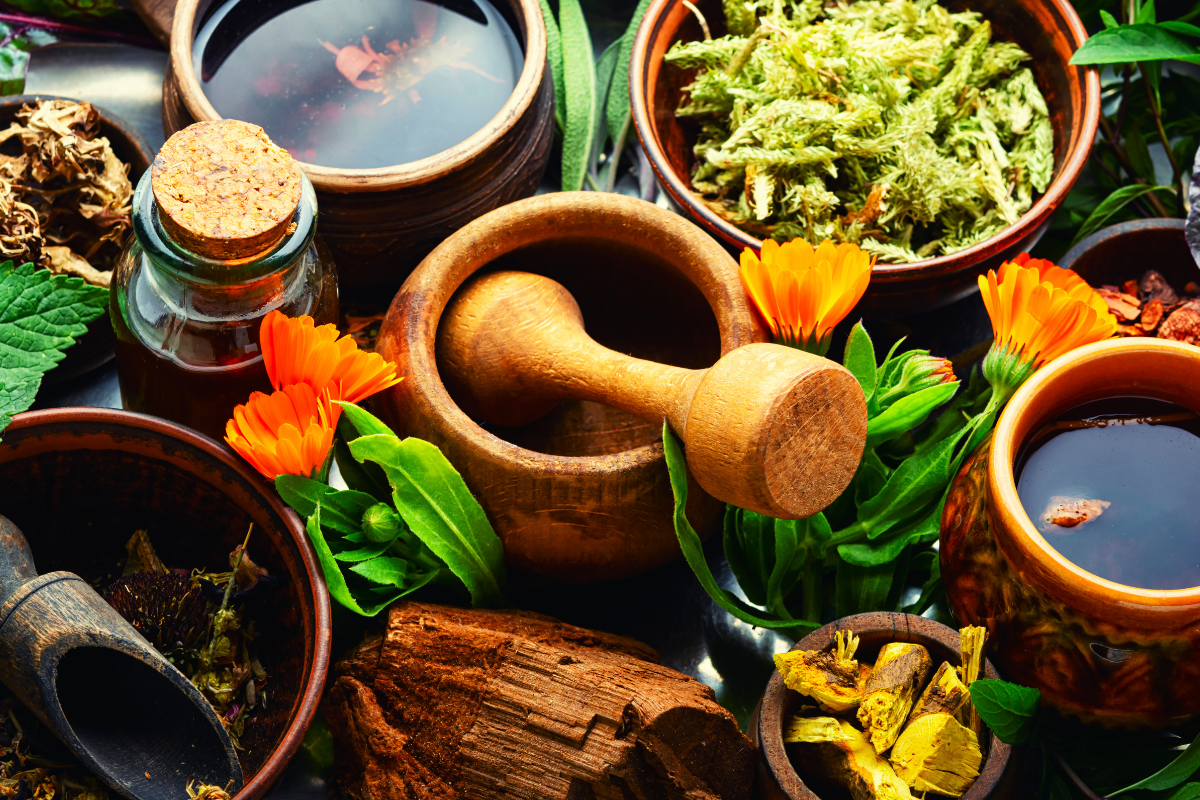Have you ever considered planting a medicinal garden? This type of garden is planted with the sole purpose of providing you with herbs and other plants of medicinal value that serve the needs of your current health or the health of your family.
You may think of a medicinal garden as simply an herb garden. But there are so many plants that are not herbs that can be grown within them. Plants like ginger root and cayenne peppers are two such examples.
Before we go into the "how-to's" of a medicinal garden let me give a word of caution here.
Please be sure you check in with a trained herbalist or healthcare professional, especially if you are on any type of medication before you ingest any kind of medicinal garden plants internally. Some plants and mixtures may react with some pharmaceuticals.
Getting Started: Considerations for the Medicinal Garden
To determine how big your medicinal garden will be, you need to know what plants you wish to grow in it. Most herbs do not take much room but may eventually need more space than you thought as they grow older.
Another consideration to keep in mind when choosing what to grow will be what you will actually use. If you don't like chamomile, for example, or have allergies to a certain plant you won't include those.
On the other hand, if you use a lot of something like peppermint already and plan on using it medicinally also, you may want to allow more ample room to accommodate the increasing amounts you may be using.
Other considerations include your climate, your perennial zone and where there is shade and sun, and at which times of the year. All of these play a part in all types of gardening, medicinal gardening included.
Make sure to check out Medicinal Herbs for a Shaker Garden from The Farm Wife for some great ideas.
Planning Your Medicinal Garden
Many people like to start early by getting those seedlings started indoors. This gives the plants a chance to get a good solid and healthy start. However, you may not have room for starting enough plants indoors.
But before you buy a single seed or plant for your medicinal garden, do the research. Make sure you know what the plant needs as it grows including light, soil, pH, and watering. Learn how big each plant will grow and how much maintenance is required.
Next, draw yourself a small sketch of what you want the design of your medicinal garden to look like. Will you have an elderberry tree or a pine tree in there? That will require much more room and you will have to consider the soil and the shade that those trees may provide.
Just get an overall picture of what you want the medicinal garden to look like, where it will be, and what plants you will choose.
Prepping Your Garden
Planning what to put in your garden was actually the hardest part. Now the fun begins. It will take some work, but oh the benefits!
Make sure the area you chose has healthy organic-rich soil. Adding some great compost is a great way to boost your soil's nutrients. You can add and adjust things later with some natural ingredients for your medicinal garden as needed.
Most herbs don't care for their feet being too wet so add some sand to your soil for drainage if need be.
And speaking of water, do you have a plan for watering your garden? Maybe you can use a DIY Watering System. There are many options here for watering. I love using a hose and a sprayer and then enjoying the look and smells of my garden as I water.
Finding Your Seeds or Plants
Unless you are planting something that is uncommon or rare, seeds and plants for this type of garden can be found most anywhere seeds are sold. However, you can try the companies below. I have ordered most of these so I can stand behind them.
- Bakers Creek Seed Company
- Seed Savers
- Mary's Heirloom Seeds
- Strictly Medicinal Seeds
- Fedco Seeds
- Johnny's Select Seeds
- Bakers Creek Seed Company
- Seed Savers
- Mary's Heirloom Seeds
- Strictly Medicinal Seeds
- Fedco Seeds
- Johnny's Select Seeds
Most Common Plants of a Medicinal Garden
Below, I have listed many of the most common plants for a medicinal garden. I have sorted them by annuals and perennials. For a more complete list or chart of plants best used in a medicinal garden, download the free worksheet at the end of this post.
Annuals
- Basil
- Borage
- Calendula
- Cayenne
- Chamomile
- Dill
- Garlic Ginger
- Holy Basil
- Lemon Grass
- Nasturtium
- Pineapple Sage
- Stevia
- Summer Savory
Perennials
- Bee Balm
- Catnip
- Comfrey
- Dandelion
- Echinacea
- Elder
- Feverfew
- Horseradish
- Jewelweed
- Lavender
- Lemon Balm
- Lemon Thyme
- Marshmallow
- Mullein
- Oregano
- Plantain
- Peppermint
- Red Clover
- Rosemary
- Sage
- Spearmint
- St. John's Wort
- Tansy
- Yarrow
Final Thoughts
You are armed with the information to get started with your own medicinal garden. Now you have to do the research to see what plants work best for your climate and conditions.
Make sure to grab your FREE Medicinal Garden Plants Worksheet so you can get started.
If you are new to gardening, make sure you check out my Beginning Herb gardening E-Book


